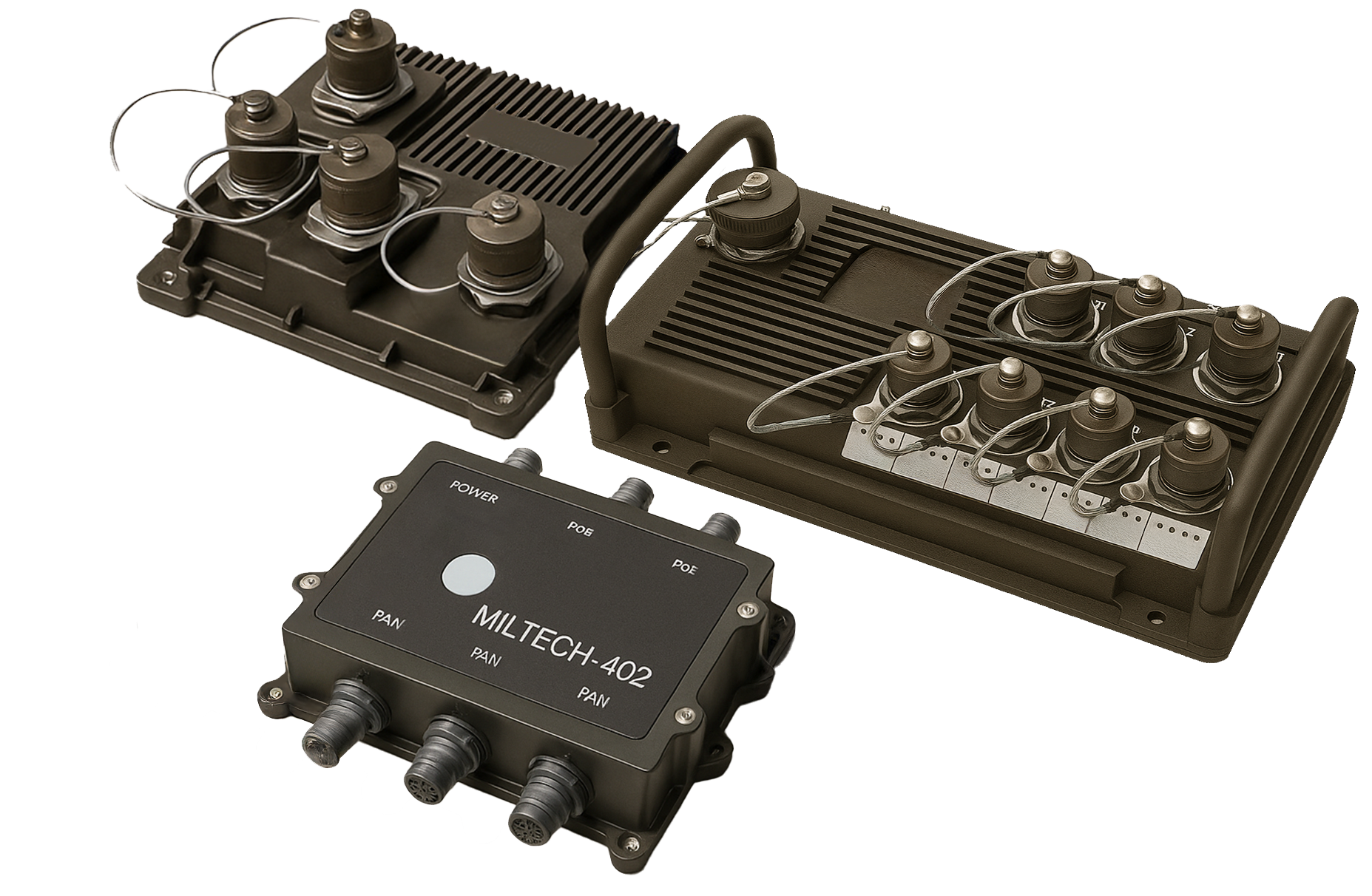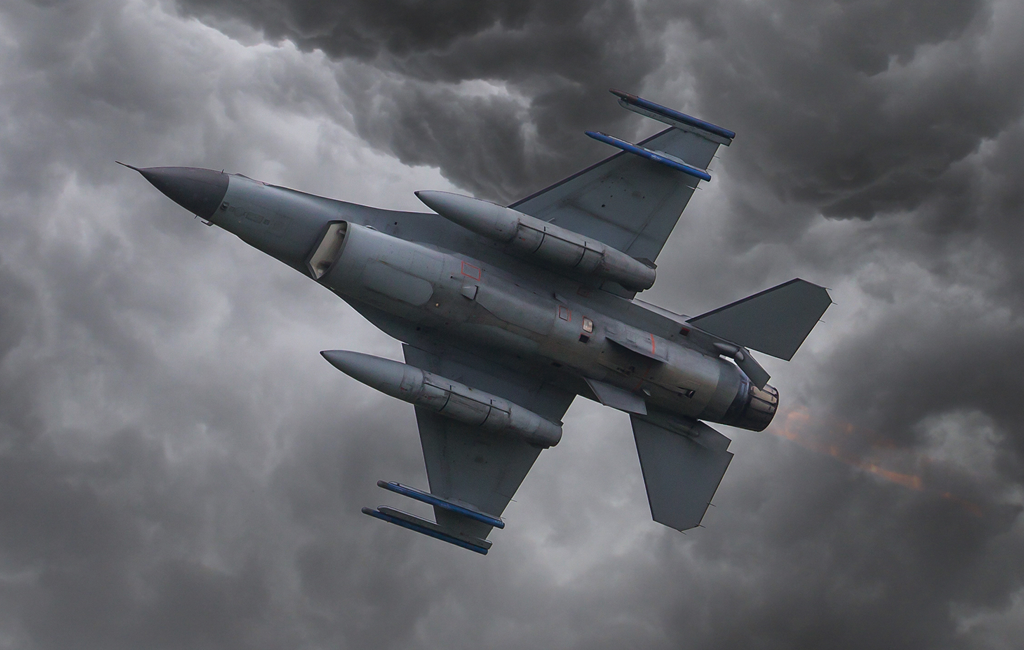
Enercon’s Power over Ethernet (PoE) product line delivers reliable power and data transmission over a single standard Ethernet cabling, optimized for military and aerospace systems. Designed to support a range of power levels and data rates, these solutions are ideal for powering compact devices such as tactical radios, ruggedized displays, and surveillance cameras. All Enercon PoE modules are designed to meet MIL-STD specifications, ensuring robust performance in extreme environmental conditions, including shock, vibration, temperature, and EMI. These products offer scalable integration options for systems requiring high reliability and minimal cabling complexity.
PoE technology enables centralized power distribution by delivering both power and data over a single Ethernet cable. This eliminates the need for separate power wiring, reducing system complexity, weight, and installation time—especially valuable in space-constrained military and aerospace platforms. Enercon’s PoE products support IEEE 802.3af/at/bt standards, offering scalable power delivery from 15W to 90W per 10M/100M/1G/10G Ethernet port. This makes them ideal for powering a wide range of networked devices such as IP cameras, radios, sensors, and wireless access points. By consolidating infrastructure, PoE simplifies deployment, enhances reliability, and supports rapid system integration in harsh, mission-critical environments.
Explore our range of rugged PoE solutions offering PSE/PD Switches and Media converters as well as PoE accessories for non-PoE equipment installation.
 |  |  | |
| Five Things to Know When Choosing a PoE Product | Next-Gen Soldier Systems: Real-Time Communication and Energy Management | MIL-STD-704: A Challenging Standard for Airborne Applications |
PoE is a technology that allows electrical power and data to be transmitted over a single standard Ethernet cable. This eliminates the need for separate power wiring/endpoint equipment power source, simplifying installation and reducing system complexity.
Enercon’s PoE solutions support:
802.3af supports speeds up to 100Mbps, while 802.3at and 802.3bt support up to 10Gbps.
PoE systems typically operate between 44V and 57V DC, depending on the standard:
These voltages are supplied by the PSE (Power Sourcing Equipment) and safely delivered to PDs (Powered Devices) through Ethernet cabling.
A PoE injector adds power to an Ethernet cable for devices that require PoE but are connected to a non-PoE switch or router. It is located between the network switch and the powered device (PD), injecting power into the data line to enable remote powering of devices like cameras, radios, or sensors.
A PoE splitter is a device that allows powering non-PoE equipment using a PoE-enabled Ethernet connection. It takes in a single Ethernet cable carrying both power and data, then separates them into two outputs:
This is useful when connecting legacy devices that do not support PoE directly but still need to be powered through the same PoE network infrastructure.
A PoE budget is the total amount of power that a PoE switch or injector can supply across all its ports. Each powered device (PD) connected to the switch draws a certain amount of power, and the combined power draw must stay within the switch’s or injector’s maximum budget.
PoE technology major benefits include: